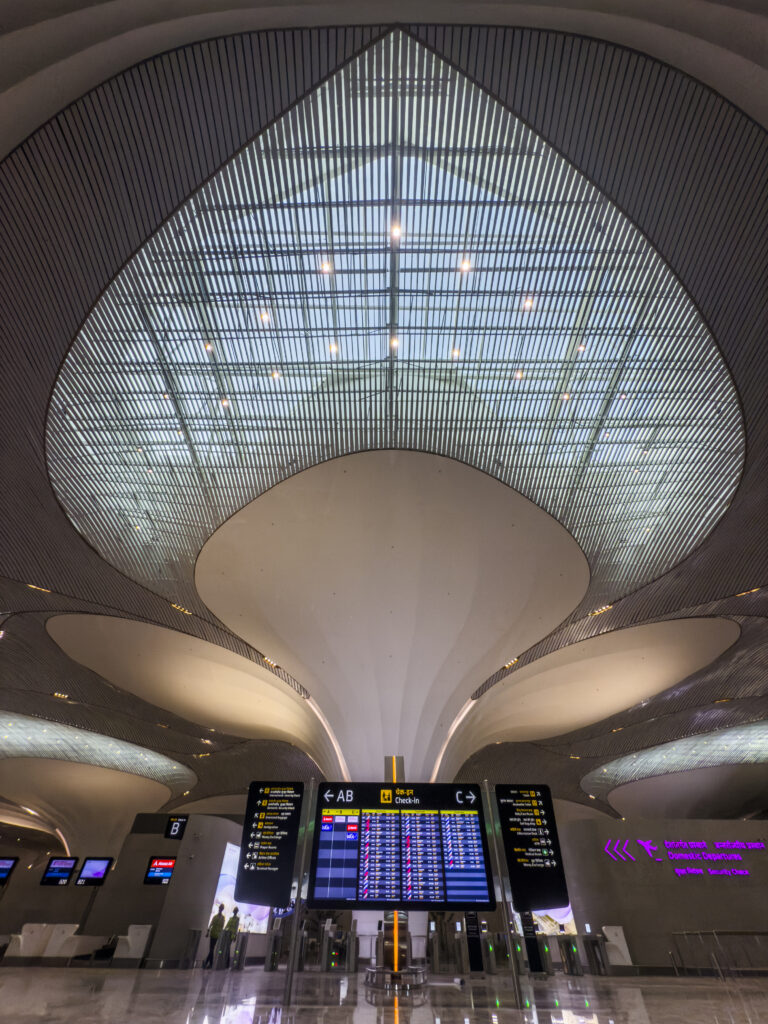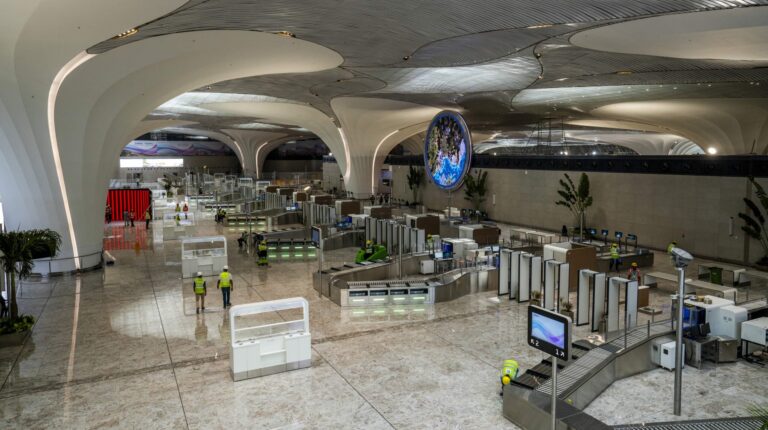Navi Mumbai International Airport (NMIA) was inaugurated by India’s Prime Minister, Shri Narenda Modi, on October 8, with developers saying it will set a new benchmark for India’s aviation infrastructure and position Mumbai among leading global air hubs such as Dubai, London and New York.
NMIA has been developed by a public-private partnership (PPP) between Mumbai International Airport Limited (MIAL), a subsidiary of Adani Airport Holdings Limited (AAHL), and the City and Industrial Development Corporation (CIDCO).
The project is a new milestone in India’s infrastructure building initiative, reflecting the government’s agenda of Visit Bharat 2047.
NMIA will complement Chhatrapati Shivaji Maharaj International Airport (CSMIA) as part of a dual-airport system serving the Mumbai Metropolitan Region. With an initial capacity of 20 million passengers per annum, it will eventually expand to 90 million, which would make it one of the largest passenger-handling airports in India.
The airport was designed as a multimodal hub, connected to Mumbai Trans Harbour Link, Navi Mumbai and Mumbai Metro, and suburban rail networks and planned waterways. This integration is expected to reduce travel times, enhance regional connectivity and strengthen cargo and passenger movement across Western India.
The building’s designed is inspired by the lotus, the national flower of India, and the architecture is said to blend India’s cultural heritage with modern design and sustainability features.

Gautam Adani, chairman, Adani Group, said, “In an era where India ascends among the world’s largest economies, we have built more than an airport – we have architected Bharat as a gateway and as one of the world’s most indispensable crossroads. This is infrastructure that does not just serve today’s demand, it creates tomorrow’s exponential possibilities.”
Jeet Adani, director, AAHL, added, “NMIA is a landmark in India’s aviation journey, uniting cutting-edge technology, sustainability and a passenger-first experience. By complementing CSMIA, it reinforces Mumbai’s role as a global aviation hub and sets a blueprint for future-ready airports nationwide.”
In its first two phases, NMIA will operate with a single runway and terminal capable of handling 20 million passengers per annum. The airport will continue to scale during further development two parallel runways and four terminals and a dedicated cargo terminal and modern facilities for perishables and express cargo, intended to boost India’s trade and logistics ecosystem.
It will also feature advanced technology developed by the Adani Group – including 5G connectivity, smart traffic management and automatic communications, and sophisticated tracking systems to achieve a more efficient and cost-effective passenger experience and cargo handling.
Adani say NMIA was planned as a ‘Green Airport’ and will have sustainable features such as 47MW of solar power generation in its final phase, electric vehicles in its fleet, a rainwater harvesting system, and passive cooling through the netted structures of the building’s lotus pillars.
The duty-free and retail space will cover approximately 1,800m2 and 5,000m2 respectively, with 110 retail and food and beverage outlets at the terminal and forecourt.
In related news, Perth Airport has outlined its vision for the future with a multibillion-dollar infrastructure investment program

